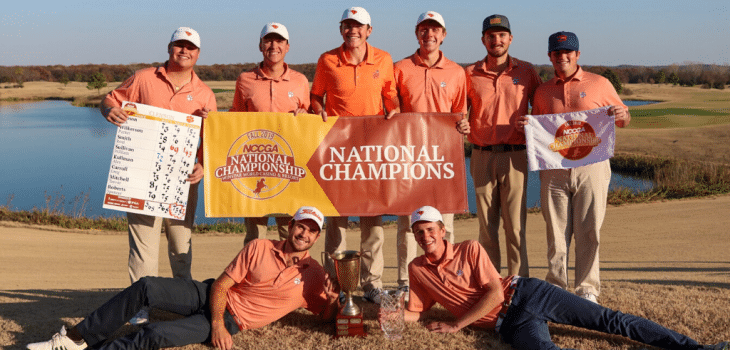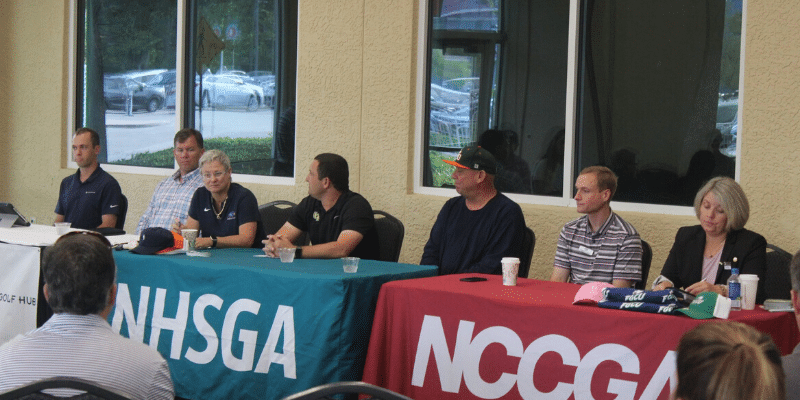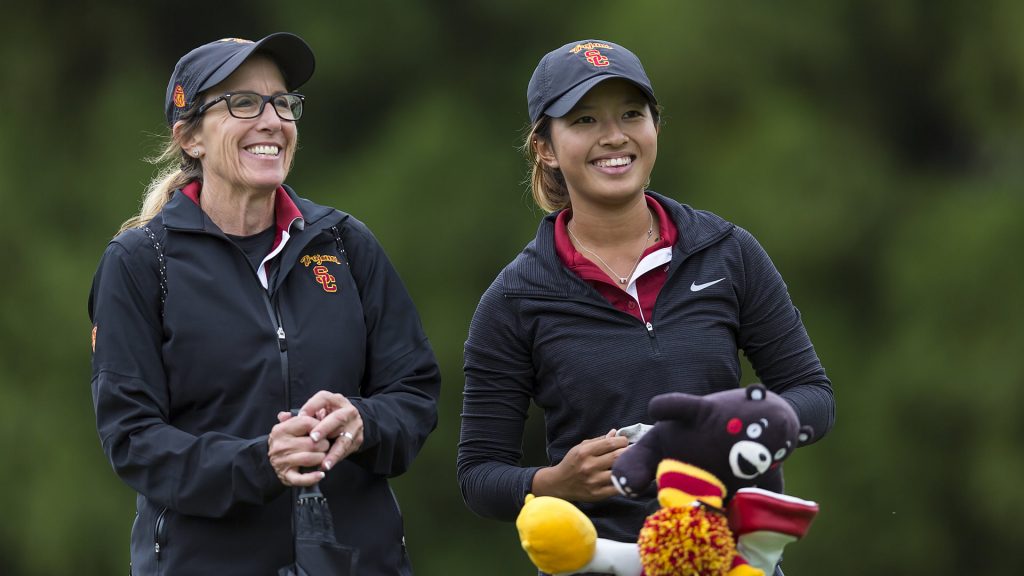
The college golf recruiting process can be difficult to manage. Junior golfers and parents are searching for colleges, researching golf teams and how to communicate with coaches. However, just because the process takes time does not mean it has to be overwhelming. The guide below will provide families with a good understanding of each step necessary to navigate collegiate golf recruiting.
Creating a college golf resume
The first step before ever contacting a college golf coach is to create a resume with your athletic and academic accomplishments. Resumes should be digital and easily accessible for college coaches to access. Important information that needs to be included:
- Tournament Scoring Average
- Junior Golf Scoreboard Rank
- AJGA Rank
- Golfweek/Sagarin Rank
- NHSGA Rank
- Current GPA
- ACT/SAT Score
In addition to all of your golf and academic averages and ranks, it is important to include a swing video for coaches to view.
A few additional touches to your resume that would be helpful:
- Include a personal reference that a college coach could contact to learn more about you. (High school golf coach or swing instructor)
- A personal statement in your resume. 3-4 sentences are perfect, talking about who you are and what you are looking for in a college and golf team.
Is your family looking for extra help creating a resume and navigating the process? Junior Golf Hub allows players to create a digital online profile, get noticed by college coaches and find and follow favorite schools.

Understanding NCAA recruiting rules & calendar
The NCAA communication guidelines can be intimidating at first to understand for families. Let’s break it down in terms of what a junior golfer and college coach can and cannot do over the process:
NCAA Division 1
Student-Athletes Can:
- Fill out recruiting questionnaires
- Send emails/updates to coaches
- Leave voice-mails for college coaches at any point
Student-Athletes Cannot:
- Go on an official or unofficial visit until August 1st of their junior year
- No off-campus contact (communicating with a coach at a junior tournament) until Aug. 1st of Junior year
- Zero communication from a coach to a student-athlete until June 15th after their Sophomore year
NCAA Division 2
Student-Athletes Can:
- Fill out recruiting questionnaires
- Send emails/updates to coaches
- Leave voice-mails for college coaches at any point
- Go on an unofficial visit at anytime
Student-Athletes Cannot:
- Go on an official visit until June 15th after Sophomore year
- Coaches cannot call student-athletes until June 15th after Sophomore year
- No off-campus contact (communicating with a coach at a junior tournament) until June 15th after Sophomore year
NCAA Division 3
NCAA Division 3 has the most relaxed recruiting rules of all the NCAA Division levels.
- Athletes can receive recruiting materials at any time
- There is no limit on when a college coach calls a student-athlete
- There is no limit on when college coaches can contact student-athletes digitally
- After the student-athletes Sophomore year, college coaches may begin off-campus communication (junior tournaments) with a student-athlete
- A student-athlete can begin taking official visits after January 1st of their junior year
NAIA (National Association of Intercollegiate Athletics) & NJCAA (National Junior College Athletic Association)
The NAIA or the NJCAA does not regulate the communication between a coach and a current high school athlete.

Communicate, communicate, communicate
Emails – There are a few tips to always consider when emailing a college golf coach.
- Start with the assistant coach first
- Avoid Monday’s when reaching out as they will typically be their busiest
- Check the team’s schedule before reaching out to them
- Personalize and individualize each email that you send, never just send a generic email
Phone Calls – Calling a college coach can be intimidating, but keeping a few keys in mind, you will be successful
- Do some homework & research on a coach and team before calling
- Have a few questions prepared that you want to be answered
- Have a plan going into the call and be yourself
Campus Visits – Paying a visit to a college coach on campus is a great way to make a good first impression
- Make sure to wear clothes that you will be comfortable making a good first impression in (ideally business casual)
- You as the student-athlete should do most of the talking and answer questions that the coach brings up while on the visit
- If you meet with the team, ask as many questions as you can about the team culture and what they like and dislike about the school
Follow up’s – Always remember to send a thank-you note to a coach and their staff after having a chance to meet with them on campus. Small gestures like this can go a long way.
Verbal Scholarships & National Letter of Intent
It’s always an exciting time when a student-athlete received a verbal scholarship from a coach. However, nothing is official until after that verbal scholarship offer is followed up with a National Letter of Intent. A (NLI) is a binding agreement between a student-athlete and a college/university that binds an athlete to that school for one academic year. Only NCAA Divison 1 and NCAA Division 2 schools utilize the program.
Want to play college golf but you’re not getting recruited by any schools? Here’s what to do if you’re having trouble getting recruited for a team. If you have other questions about college golf recruiting, feel free to reach out to me at chris@highschoolgolf.org